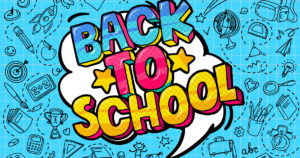 From watching the news this past week, one of the things that is standing out most to me is the importance of key messaging, and sticking to the message. If you don’t know what I’m talking about, just take a look at the presidential press conferences from last week and the ensuing confusion and caution in their wake.
From watching the news this past week, one of the things that is standing out most to me is the importance of key messaging, and sticking to the message. If you don’t know what I’m talking about, just take a look at the presidential press conferences from last week and the ensuing confusion and caution in their wake.
Myth: It’s not important to spend time developing key messages—people are going to say what they want anyway.
Fact: Key messages are imperative in the planning process, so that they can be interwoven into every communication message, talking points, etc. to ensure consistency of messaging so that your messages stick!
Here’s the thing–just because people naturally communicate does not make them communication experts. If people are left to their own devices in developing key messages on their own, their responses will vary, resulting in confusion, lack of clarity and zero consistency in messaging. The end result is confused stakeholders whose trust will be diminished due to lack of consistent messaging from your organization.
Key messages can be 1-2 sentences long, and you should identify three truthful key messages that will be used throughout your campaign, process, crisis or situation management. These are not taglines—they are what you want people to remember throughout the process. And avoid education-ese, jargon or internal terminology/acronyms. They need to be concise, active, positive, short, and specific.
Key messages answer the “What should we be saying to our stakeholders?” question during a strategic communication process, which can be a short or long term approach to communicating about an issue, program/school, during a crisis or situation. In other words–all of your communications should be strategic.
How do you decide on your key messages? Your key messages are the three things you want all of your stakeholders to remember throughout the process–everything else you say and do will support this. They answer the “Why?” and “How?” questions. Here are some examples, based on a school consolidation communication plan I developed for a school district client:
- School consolidation will help {District’s name} schools stay strong by closing a $12 million budget shortfall and addressing declines in school enrollment. In doing so, we can ensure that our schools maintain the level of excellence that our families expect for our students and support innovative learning in the classroom so that our students are prepared for a highly competitive global society.
- The District will be working closely with the community throughout the school consolidation process. We will provide our families opportunities for input during the process, including community information sessions.
- The decision to consolidate schools comes after several years of studying and assessing our district’s finances, facilities, enrollment and impacts to our entire district community.
Who should have these key messages? Again, your key messages should be interwoven throughout all of your communications to your stakeholders–your talking points, FAQs, website content, used in media interviews, etc. Ensure that your district cabinet, board and other key communicators not only have these key messages, but compel them to use them in their communications.
Who should develop the key messages? Collaborate as a team with your Cabinet members to develop the key messages–having multiple perspectives will strengthen the clarity of your messaging and ensure they’re on target.
Need help developing key messages?
We’re here to help. Give us a call at 916.673.8868 or hvmcgowan@sounding-board.net.

